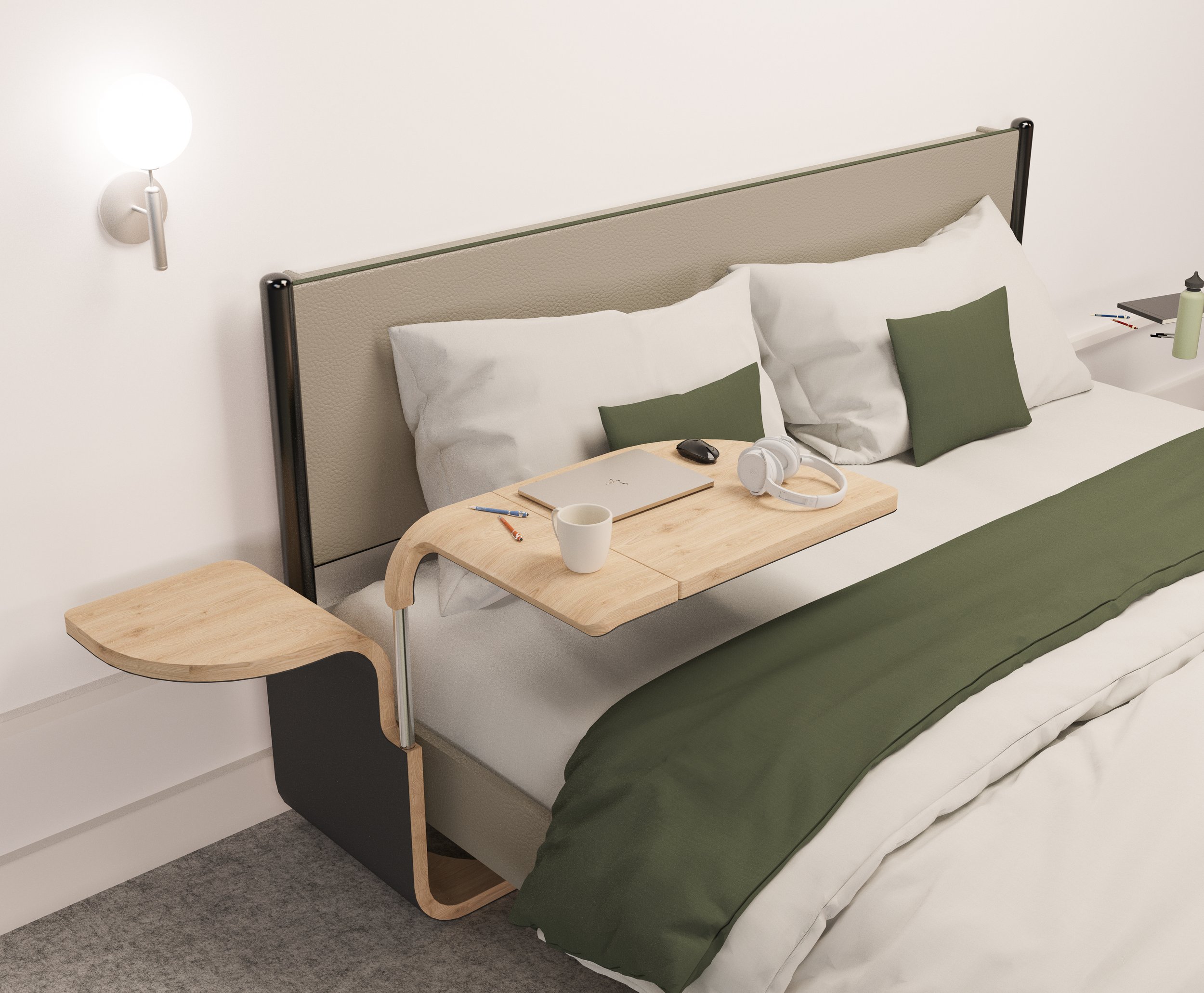Dahlia
A nightstand designed for people who work from bed.
ABOUT: Developed for the Global Innovation Awards. We were tasked with identifying an area of need within the home, and devise a corresponding solution.
DURATION: 6 Weeks
TEAM: Individual project

Primary user: someone who works in bed due to chronic illness or physical disability.
Secondary user: someone who chooses to work in bed because they find it more comfortable.
“As a disabled freelance writer, working from my bed makes it possible for me to work at all”
- Rachel Charlton-Dailey
-
Difficult to move on carpet.
Feel very medical.
Limits usable under bed storage.
Does not facilitate differentiation between work and sleep spaces.
-
Drinks can easily spill.
Everything must be removed from the surface to be put away.
Makes it difficult to get up.
Doesn't fit large laptops.
-
Difficult to move out of the way.
No separation between work and sleep spaces.
Visually intrusive.
Cluttered nightstand
Bad viewing angle
Distractions while resting
38% of remote workers regularly work from bed.
Objectives:
Simple and intuitive
Store all necessary desk items
Separate work and sleep spaces
Easy to move out of the way, encouraging moving around.
Separation between work and sleep spaces to minimize distractions during rest.
Adjustable to accommodate any bed size.
Customizable height.
Adjustable angle for improved ergonomics.






















